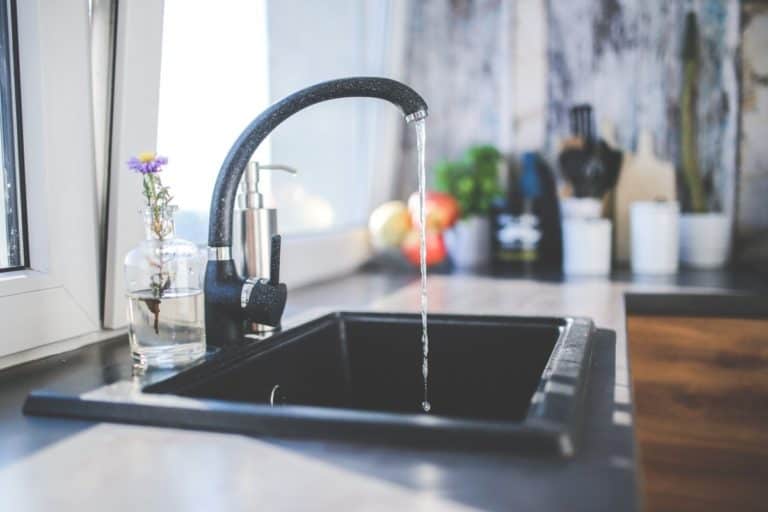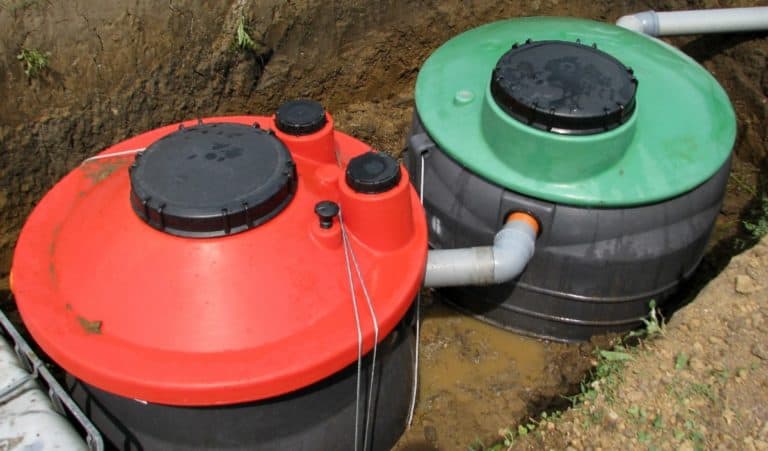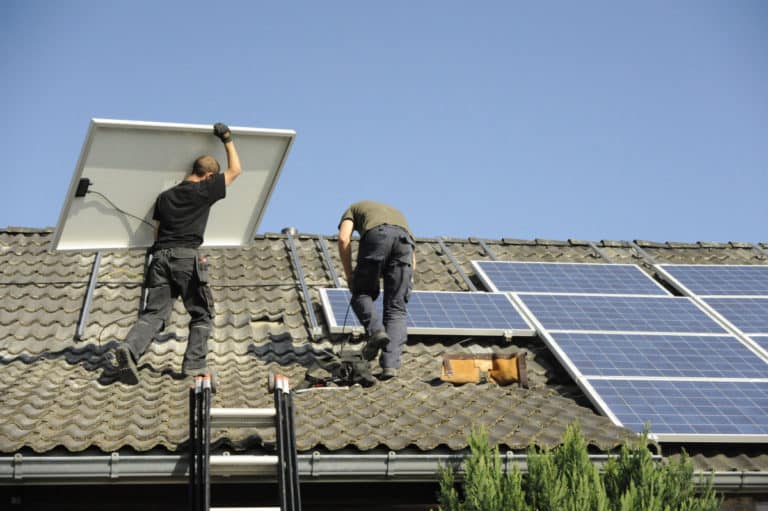How Many Solar Panels Do I Need to Run My Home Off-Grid?
When you prepare to install solar panels in your off-grid home, one of the most critical questions is: How many will I need?
The number of solar panels depends on the amount of power you use, the average daily sunlight, and their size. A small home or cabin using 1,500kWh and receiving an average of 4 hours of full sunlight a day, would need two 300W panels. A large house, in the same area, needing 9000kWh, would require ten 300W panels.
To calculate exactly how many panels your home needs, you need to make some decisions about the system you will use. Once you’ve got an outline of your system, then you can use an off-grid solar calculator to determine the number of panels.
This article will take you through this process step by step.
Table of Contents
Calculate your power usage
The first thing you must do to choose the size of your system is to calculate how much power you will need. This is an essential step to ensure that you have enough battery storage and solar panels to run everything you need, now and in the future. Start by adding up the power needed to run each appliance in your home.
There are several ways you can find the power rating of an electrical appliance:
- Look at the power rating label– This is can be found on most appliances and will usually give a value in watts. The label in this picture shows that the power usage of this appliance is 400watts.
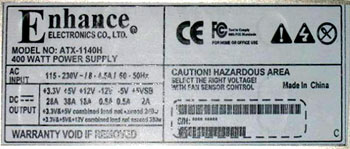
If there is a range of values, like on this label, use the higher amount in your calculations. Here you would use 2400watts.
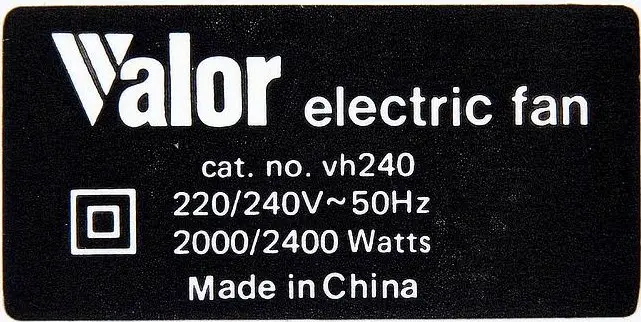
If the label only gives you the values in amps and volts, use this formula to find the power rating:
amps x volts = watts
For example, if the current is 3A and the voltage is 110V, your wattage is 330W:
3 x 110 = 330 watts
- Use a list of appliance wattages – You could get a rough power rating from a list of typical wattages. This is the least accurate way to do this, so it should only be used as a rough estimate.
- Use a watt meter plug – This is a simple watt reader that is attached between your home electricity outlet and the plug of any appliance. Plugging any device into the reader gives you a precise power reading. This is an excellent way to ensure accuracy, and you can usually find a good device for less than $15. Check out the latest price of the one I bought from eBay.
- Research the wattage online – Sometimes the information you’re looking for maybe in the user information manual. These can often be downloaded directly from the manufacturer.
- Contact the manufacturer – If you can’t find the relevant details online, you could contact the manufacturer directly for the information.
How long will you use each item per day?
Now that you know the wattage of each item in your home, estimate how long you will need to run it for each day. It’s always best to think of worst-case scenarios, so if you have a light on for 2 hours during summer, but 6 in winter, record it as six hours.
Putting the information in a table like this will be useful:
| Appliance | Power (Watts) | Length of daily use (hours) | Watt hours (Wh) |
| Light bulb | 60watts | 6hours | |
| 46inch LED TV | 70watts | 4hours | |
| Fridge Freezer | 80watts | 24hours | |
| Laptop | 100watts | 3hours | |
| Total |
Now you can use this formula to work out the watt hours required each day.
Power x Time = watt hours
| Appliance | Power (Watts) | Length of daily use (hours) | Watt hours (Wh) |
| Light bulb | 60watts | 6hours | 360 |
| 46inch LED TV | 70watts | 4hours | 280 |
| Fridge Freezer | 80watts | 24hours | 1920 |
| Laptop | 100watts | 3hours | 300 |
| Total | 2860Wh |
Many systems count power usage in Kilowatt-hours. This is a unit containing 1000 watt-hours. To convert watt-hours to kilowatt-hours, they must be divided by 1000.
2860Wh ÷ 1000 = 2.86kWh
Add a margin for error
Now that you know how much you’re using; you need to consider the maximum you may need in the future. If there are any upgrades or extra electrical items you may buy, add them to your table and include them in the calculations.
Now add 20% to your value to give you some room in case you need to add more later.
(2.86kWh ÷ 100) x 120 = 3.43kWh
Now you can enter this value into the solar power calculator.
I use this one at altE because it provides information about each part of your solar panel system.
You may also be interested to read: The complete guide to off-grid solar inverters, or What is the difference between off-grid and on-grid solar panels?
Select the size of your battery bank
While you’re calculating the number of panels you need, it’s essential to size up some of the other components like your battery bank. This is because the choices you make here will affect the size of your solar array.
How many days of back up should my batteries provide?
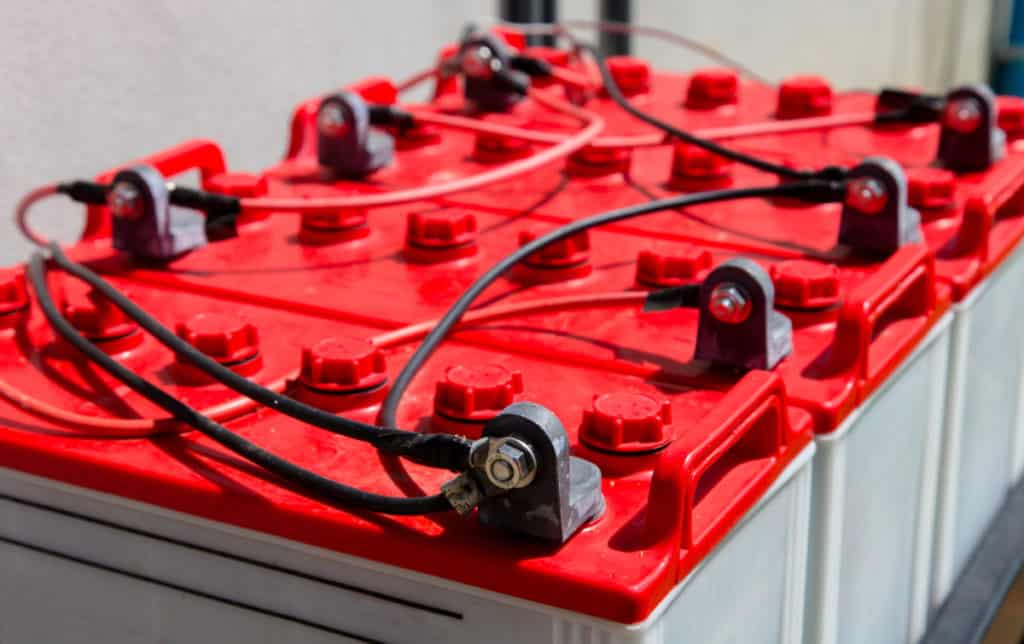
The number of batteries you need in your battery bank will depend on how long they will be needed to back up your system. This will depend on your local climate, your situation, and what other backups you have available.
The battery backup is how long you want to be able to run your house from battery power only. This is used during the night or at times with little sunshine. A standard backup time is between 3 to 5 days, but it can be more or less. The longer you want to be able to back up your system for the larger battery bank you will need.
Some people choose to have a battery backup that can run for a few days and add a generator that can top up the batteries if necessary. This way you can back up your system for several weeks at a time should it become necessary.
At what temperature will you store your batteries?

Batteries have reduced capacity at low temperatures. The chemical reactions that store the power become inefficient, take longer to charge and store less energy. Find somewhere to keep them that is close to the panels but will stay at a nearly constant temperature.
When you have an idea of where you will keep them, leave a thermometer there for a week (ideally over winter) and take regular readings. This will give you a good idea of the temperatures you can expect. If they fall too low, you may need to choose somewhere else or find a way to increase the ambient temperature.
What voltage should my battery bank be?
For most solar systems, you can choose between 12, 24, or 48volt batteries. What you select will affect what other components you can include in your system, the formation you need to wire them in, the size of copper wire you will need, and the overall cost of your battery bank.
This video outlines the pros and cons of 12v systems vs. 24v systems:
How many batteries will I need?
When you complete the solar calculator, it will indicate the size of the battery bank you need in amp-hours. You can use this to calculate the number of batteries you should have in your system.
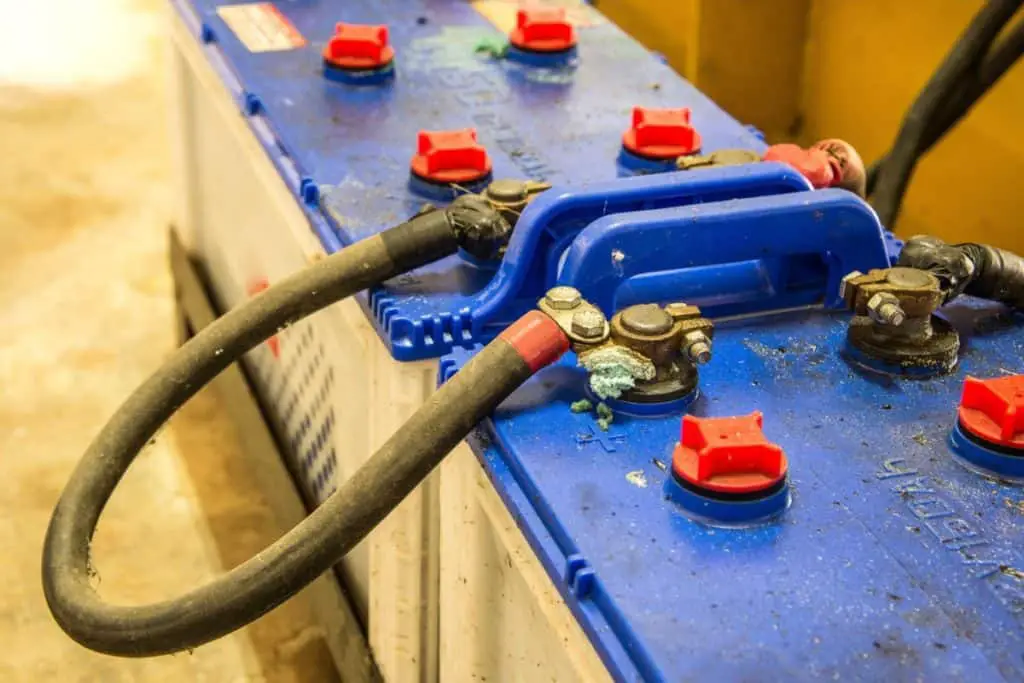
However, when you choose your cells, you must know their depth of discharge. This is how much of the stored power can be discharged before it affects the length of use of the battery. Most batteries can only be discharged to 50% without negatively affecting their lifespan.
It is possible to find those that can be fully discharged each time, but when sizing your battery bank and choosing your batteries, this must be factored into the calculations.
For example, if the calculator tells you that you need 457amp hours for batteries with a 50% depth of discharge, you will need to buy batteries to provide a total of 914ah.
With a 50% discharge, 5 x 100ah batteries will provide 250amp hours, so you will need 10 x 100ah batteries to give 500amp hours.
Related reading: What is the best battery for a solar power system?
Calculate the number of panels
Now that you’ve carefully sized the battery bank, you can move on to the panels:
How much daily sunlight is there in your area on average?
Start by finding out how much sunlight shines in your area. Ideally, you want to know the average amount you can expect to get in the worst month of the year. If you calculate it for the worst-case scenario, likely, you’ll always have enough power.
There are several maps available like this one that will help you find the amount of sunlight for your area. Once you have this value, you can then use the calculator to determine how many panels you will need to run your home, even on the worst days of the year.
What size panels will I need?
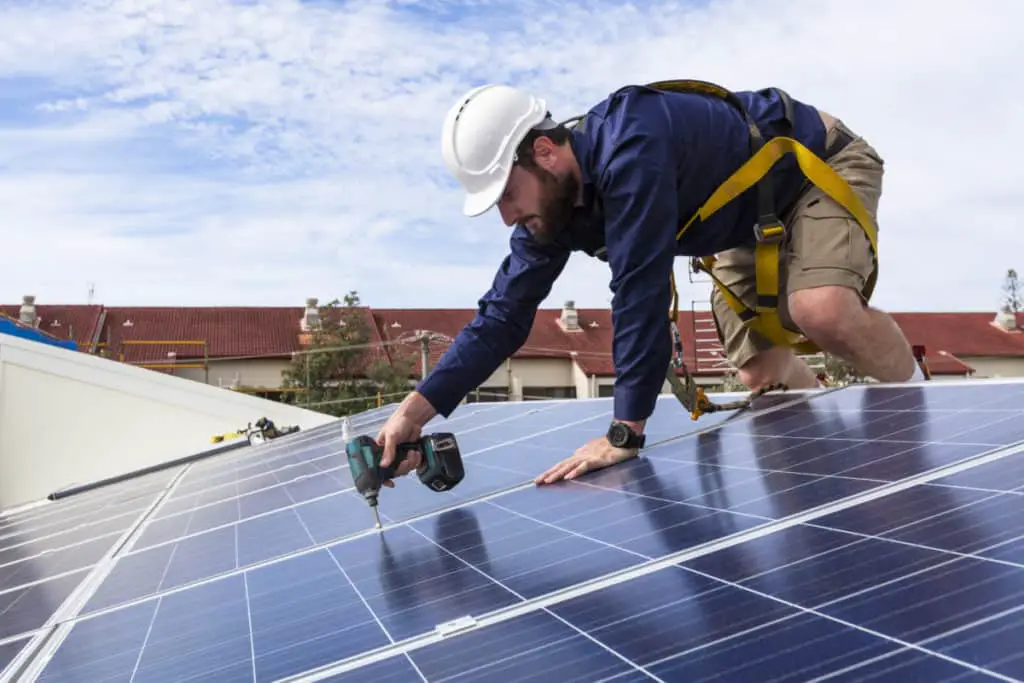
Once you’ve entered all the previous information into the solar calculator, you should now know the total wattage value your solar array must be. Solar array refers to all the panels in your system. To decide how many panels you need, you must choose the wattage of the individual panels. Panels come in various power ratings so you can choose which best suits you. This will depend on:
- The size and shape of the area you have available to place them. Panels with a higher power rating are also physically larger. Research the physical size of each panel to help you decide. The type and efficiency of the panel will also affect its size.
- The cost of the panels. It is usually cheaper to get a small number of large panels than several smaller ones.
- The other components in the system. Choosing larger panels means less expensive wiring.
Check out my recommendations for best solar power equipment.
How many solar panels will I need?
Here are three examples of different sized systems and how many solar panels they need.
The examples are just to show you what information you would have after using a solar system calculator. To make it more relevant I’ve chosen different homes in different areas to demonstrate how some the other variable play a role in calculations. As a result, you’ll see that values like ‘average sunlight’ and ‘battery storage temperature may change from one example to the next.
Example 1: A simple set up in a small home

| Power used by the appliances currently in the home | 2.86kWh |
| Add a 20% safety margin | 3.43kWh |
| Length of backup required (longest time your likely to be without sun) | 3 days |
| Battery storage temperature | 60F |
| Battery bank specifications | 26271watt hours, 48-volt system, 548 amp hours |
| Average sun exposure in the worst month of the year | 4 hours |
- The solar system requires 1.31kW.
- This system will need 5 x 300watt panels, which will give a total of 1.5kW
A small home using 2.86kWh, with a 48-volt battery system with backup for three days, needs 5 x 300watt solar panels.
Example 2: A medium-sized home

| Power used by the appliances currently in the home | 6.5kWh |
| Add a 20% safety margin | 7.8kWh |
| Length of backup required (longest time your likely to be without sun) | 5 days |
| Battery storage temperature | 70F |
| Battery bank specifications | 93288 watt hours, 24-volt system, 3887 amp hours |
| Average sun exposure in the worst month of the year | 2.8 hours |
Results:
- The solar system requires 3.62kW.
- This system will need 13 x 300watt panels which will give a total of 3.9kW
A medium home using 6.5kWh, with a 24-volt battery system and a backup for five days, needs 13 x 300watt solar panels.
Example 3: A solar panel system for a large family home

| Power used by the appliances currently in the home | 17.8kWh |
| Add a 20% safety margin | 21.36kWh |
| Length of backup required (longest time your likely to be without sun) | 3 days |
| Battery storage temperature | 60F |
| Battery bank specifications | 163597watt hours, 48-volt system, 3409amp hours |
| Average sun exposure in the worst month of the year | 3 hours |
Results:
- The solar system requires 9.26kW.
- This system will need 31 x 300watt panels which will give a total of 9300kW
A large home using 17.8kWh, with a 48-volt battery system and a backup for three days, needs 31 x 300watt solar panels.
As you can see from these examples, the smallest adjustments to the hours of sunlight, the voltage of the batteries, and even the temperature you can store them can have a considerable effect on the number of panels your home needs.
Finalizing your system and next steps
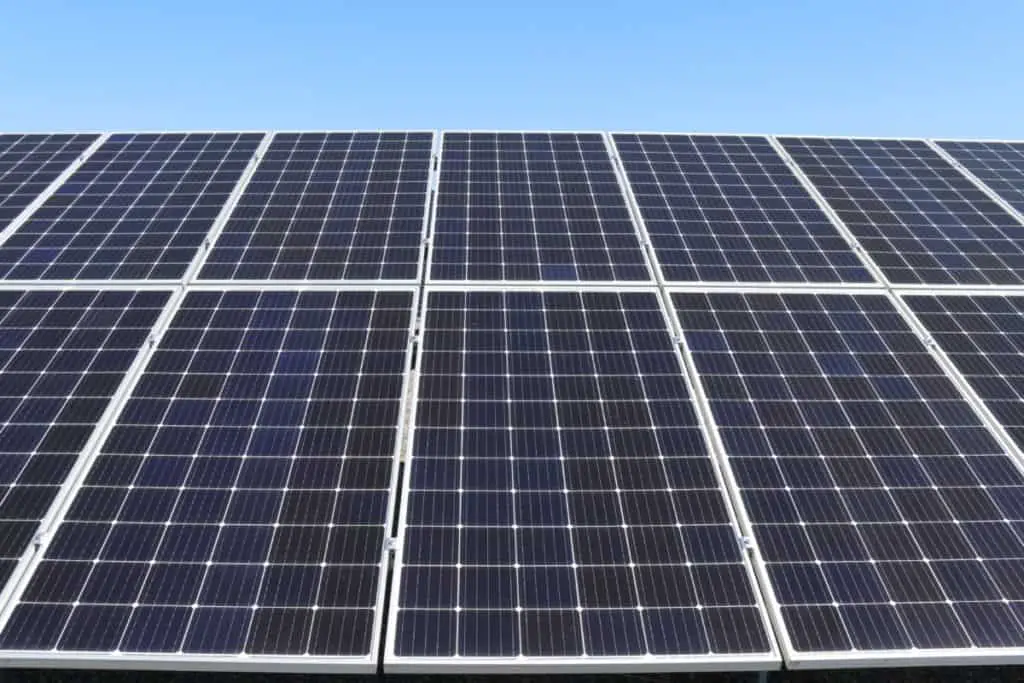
Once you’ve run your information through a calculator and made some choices about your system, you can go back and make any necessary adjustments. For example, you may not have space or budget for the number of panels you need. What can you do to make a difference? Could you provide better storage for the batteries? Choose a battery bank of a different voltage?
If these don’t give you the results you’re looking for, you may need to take a look at the amount of power your home needs to run. What appliances can you do without? Can you find more power-efficient alternatives?
For some lower power solutions, take a look at my article called: What are off-grid appliances?
There are lots of low power appliances available, and some off-grid homes use butane to run items like the fridge. You will be amazed at what a few changes to your power usage can do to your solar requirements.
Now that you know how many batteries and solar panels you need, it’s time to size up your inverter and solar inverter. To get the right inverter, visit my guide to off-grid solar inverters.
To choose the charge controller, visit the calculator at altE, and the last entry in the calculator will show you the size of the controller you need.
You may also like to read my article: How to choose an off-grid charge controller.
Conclusion
The number of solar panels you will need to run an off-grid solar system depends on your power usage, climate, and battery bank. It also depends on which components you choose to include in the system, As a result, it’s always worthwhile running your calculations for several scenarios to help you determine which parts work best for you.
Because the calculations here are based on worst-case scenarios, once you have your system running, the idea is that you will never feel short of power even on the cloudiest days. There are several accounts of people who went off-grid only to find that they had so much energy they had to come up with creative ways to use it productively.
Check out my recommendations for equipment that will help you take your home off-grid.
My Off-Grid Product Recommendations
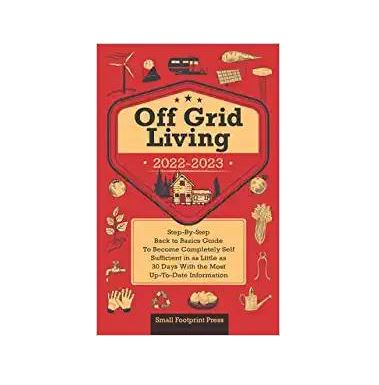
Useful Book: Off Grid Living 2022-2021 – This incredible step by step guide is a great read and gives you useful information about reaching self-sufficiency in just 30 days. Get the paperback on Amazon or read it free with a Kindle Unlimited subscription or listen to the audio version with Audible Plus membership.
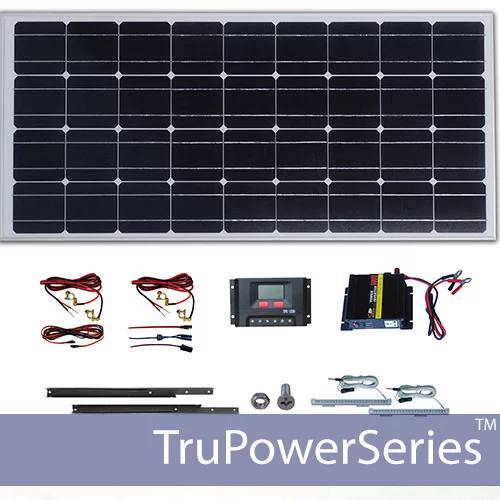
Small Solar Panel Systems: Silicon Solar – This is an excellent company that offers lots of products to get you started on your solar journey. Visit Silicon Solar.
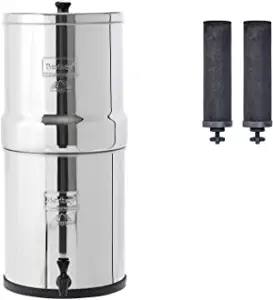
Family Water Filter: Big Berkey – For a fast, affordable water filter with no plumbing required, you can’t beat a Big Berkey gravity-fed filter like this one from Amazon.
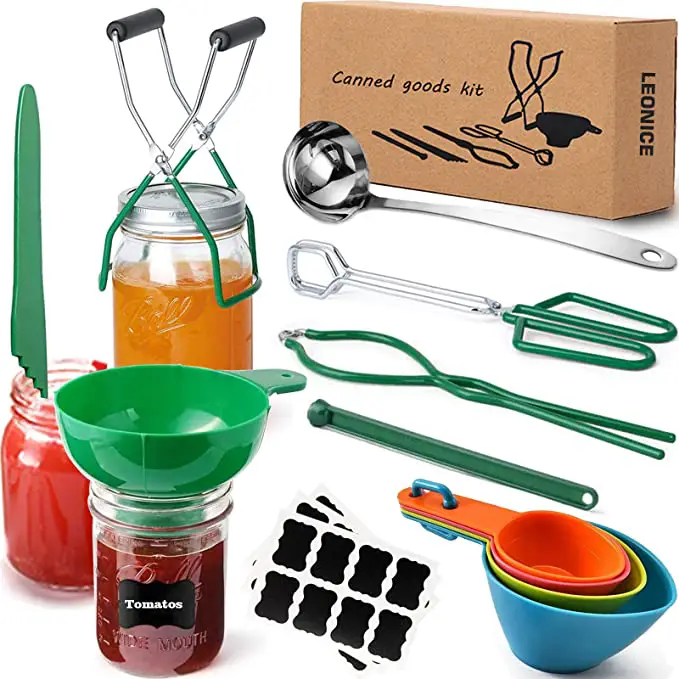
Canning Equipment – This canning starter kit, 22-quart Barton pressure canner and twelve-pack of Ball 16oz mason jars will help you preserve food as you work towards self-sufficiency.
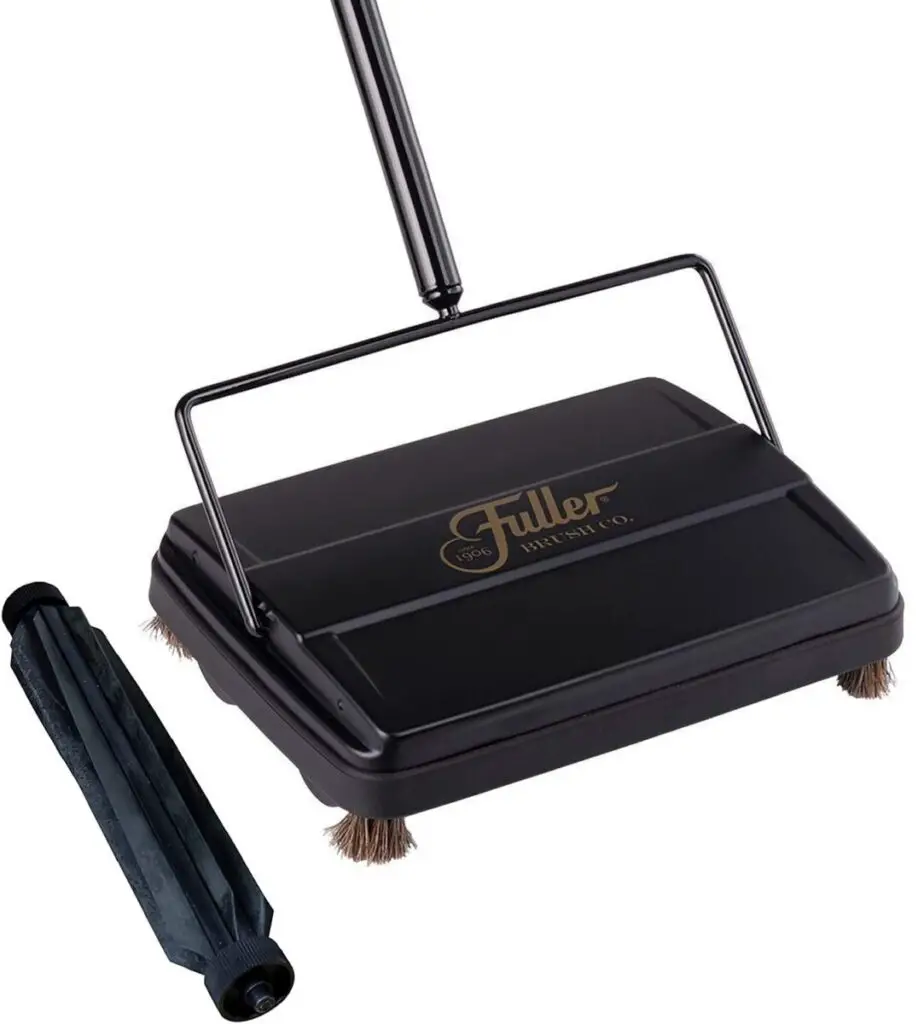
Cleaning: Fuller Carpet Sweeper –. This carpet sweeper is an ideal way to keep your home clean without using up your energy stores on vacuuming.

Handy Knife: Gerber Serrated Paraframe – This handy all-purpose knife is lightweight and ideal for all those little jobs around your home and garden.



